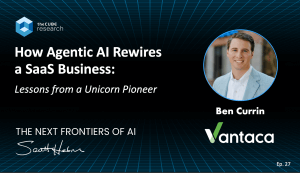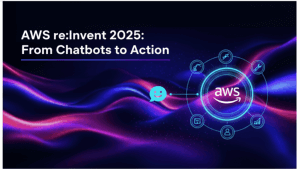As enterprises adapt to the AI era, they face a critical hurdle: the traditional network architectures that supported past digital transformations will not be sufficient for AI workloads. At Cisco Live 2025, Cisco addressed this challenge head-on with a comprehensive series of innovations, including 24 announcements spanning infrastructure, operations, and security. These launches mark a strategic shift from incremental improvements to a full-stack reinvention purpose-built for an AI-driven world.
During the event, we spoke with Anurag Dhingra, SVP and GM of Enterprise Connectivity and Collaboration at Cisco, to explore the rationale behind these innovations and how Cisco is laying the foundation for the next generation of enterprise IT.
Redefining Infrastructure for Digital Workers and Software Agents
Dhingra emphasized that AI is reshaping not only how work gets done, but who—or what—is doing it. Digital workers, software agents, and even robots are beginning to augment or replace traditional workflows in various industries, including manufacturing. These changes bring dramatic shifts in network traffic patterns, security postures, and operational complexity.
This new landscape demands more than incremental updates. Enterprises need infrastructure that can support machine-speed tasks, secure interactions between human and non-human actors, and scale rapidly to accommodate exponential growth in connected devices.
Introducing AgenticOps: Autonomous Operations with Humans in Control
A key highlight of Cisco Live was the introduction of AgenticOps, a term Cisco uses to describe the next evolutionary step in IT operations. While AIOps focuses on leveraging AI to assist human operators, AgenticOps takes it further by integrating autonomous software agents into workflows.
Dhingra was quick to point out that AgenticOps is not about replacing humans, but augmenting them. Humans remain in control, orchestrating and collaborating with agents to improve responsiveness and decision-making. This approach is foundational to Cisco’s broader AI strategy, enabling a new level of automation while maintaining operational oversight.
Unified Management Across Environments
Operational complexity is one of the top concerns for enterprise IT leaders, especially given the proliferation of disparate tools for managing campus, branch, data center, and cloud environments. Cisco addressed this with a unified management platform strategy that consolidates control planes across domains.
This includes:
- Catalyst and Meraki: Unified under a common hardware platform with flexible deployment options, on-premises or cloud-based.
- Nexus Dashboard: Now managing both NX-OS and ACI data center environments.
- Security Cloud Control: A single pane for enforcing security policies across the network.
Looking ahead, all of these domains will be further integrated under Cisco Cloud Control, with AI Canvas as the operational front end, enabling seamless multi-domain management.
Next-Generation Devices for AI-Optimized Networking
To support the requirements of AI-driven environments, Cisco unveiled a range of next-generation hardware designed for scalability, power efficiency, and embedded security:
- Smart Switches: New fixed access and modular core switches built on Cisco Silicon One with embedded processing for security workloads like Hypershield.
- Secure Routers: A refreshed portfolio combining advanced routing, SD-WAN, and next-generation firewall capabilities.
- Wi-Fi 7 Access Points: Including the industry’s first large-scale Wi-Fi 7 AP for stadiums and large venues.
- Campus Gateways and Industrial Ethernet Switches: Supporting diverse deployment models with consistent cloud-native management.
These innovations position Cisco to meet both the performance and security demands of a distributed, AI-enabled enterprise.
Fusing Security into the Network Fabric
Rather than treating security as an overlay, Cisco is embedding it into the network fabric. Technologies like Hypershield enable hybrid mesh firewalls that turn each network element into an enforcement point. Policies defined in Security Cloud Control can be applied dynamically across environments.
Another innovation is Live Protect, which leverages eBPF in the kernel to deploy compensating controls for zero-day vulnerabilities without requiring a system reboot or immediate patching. This dramatically reduces the window of exposure and supports the “stop the attack, not the network” philosophy.
Cisco also emphasized its Universal ZTNA (Zero Trust Network Access) architecture, enabling consistent security for users and devices, regardless of location or access method.
Purpose-Built AI Capabilities: Deep Network Model and AI Canvas
Cisco’s AI strategy is grounded in domain-specific intelligence. The Deep Network Model is a specialized large language model trained on decades of Cisco documentation, logs, and CCIE-level knowledge. It outperforms generic models by 20% on network-specific queries and serves as the foundation for Cisco’s AI-powered operations.
On top of this model, Cisco introduced AI Canvas, a collaborative environment for human and agent interaction. Key features include:
- Natural language troubleshooting via conversational AI
- Cross-domain data integration from tools like Meraki, ThousandEyes, and Splunk
- Generative UI capabilities to create visualizations on demand
- Built-in action and validation loops to implement and verify fixes
- Automated report generation for ticket updates
Unlike traditional tools, AI Canvas supports multi-user collaboration, redefining how teams approach network operations and embodying the AgenticOps vision.
OurANGLE
Cisco’s announcements reflect a strategic shift toward delivering a unified, secure architecture purpose-built for the AI era. The introduction of AgenticOps is particularly compelling, as it combines autonomous software agents with human oversight to drive operational efficiency without sacrificing control. Cisco’s Deep Network Model and AI Canvas showcase the power of domain-specific AI, providing actionable insights, collaborative workflows, and the ability to take real-time action across environments.
Dhingra noted that any one of these things by itself is great, but they’re not sufficient. It’s the synergy across software, hardware, and AI that positions Cisco and its customers for success in AI environments.
These innovations form a comprehensive and cohesive architecture that enables enterprises to securely scale operations, embrace automation, and unlock the true potential of AI. The next step is to get them into the customers’ hands to demonstrate their value to the business.
For more coverage on Cisco Live 2025 from theCUBE Research, please check out the following posts



